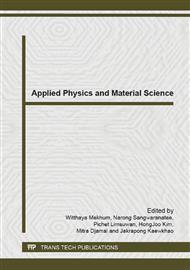p.16
p.20
p.23
p.27
p.31
p.35
p.39
p.43
p.46
Quantum Field Theory Viewpoint of Refractive Index
Abstract:
We rigorously investigate the refractive index by using the technique of the Green’s function. The propagator model of the polarization-free photon is created in quantum field theory viewpoint. The Green’s function is solved in detail with appropriate boundary originating an idea of amplitudes to propagate from place to place found in Richard Feynman's QED: The Strange Theory of Light and Matter (Princeton University Press, Princeton, New Jersey, 1985). The polarization-free photon is emitted from external sources or emitter in one medium and then propagates into another medium with the key idea: expression for amplitudes of scattering is a shrink and a tune by a certain amount, and is the same everywhere in one medium is given by determining the various contributions to probability amplitude coming from an integration over an arbitrary circular region of radius a. The purpose of this communication to establish the amplitude for the transmission of propagates by disregard about the material property. This amount is different for different materials, which corresponds to the “slowing” of the light is extra turning caused by the atoms in one medium scattering the light. The degree to which there is extra turning of the light goes through a given material is called its “index of refraction” for geometrical optics in classical physics.
Info:
Periodical:
Pages:
31-34
Citation:
Online since:
June 2014
Authors:
Keywords:
Price:
Сopyright:
© 2014 Trans Tech Publications Ltd. All Rights Reserved
Share:
Citation:


